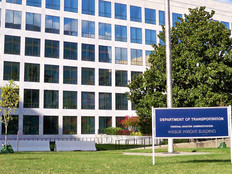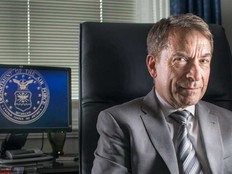Trump Administration Highlights the Importance of Shared Services
What is the golden child when it comes to the Trump administration’s vision for the future of federal IT
Last week, the White House issued a report on plans to modernize government technology. The report has an entire section devoted to shared services, which consolidate common government operations like IT management, finance, human resources and other functions into centralized service providers. Multiple agencies can take advantage of the services, reducing costs and boosting efficiencies as the government leverages its massive collective buying power.
The report indicates that the Trump administration intends to ramp up the use of shared services and wants agencies to deploy more common tools so that the initiatives bear fruit. “The existing federated and distributed approach to IT is no longer sustainable in an increasingly mobile, cloud-based and complex digital world,” the report says.
Trump Administration Focuses on Shared Services
Shared services have existed in the government for decades. However, the Obama administration placed a strong emphasis on them. In October 2015 the Office of Management and Budget and the General Services Administration announced the first-ever governmentwide operating model for shared services, including the establishment of the Shared Services Governance Board and creation of the Office of Unified Shared Services Management (USSM).
Then, in May 2016, OMB issued specific guidance to agencies on shared services that codified many existing practices. Among them was a plan to reduce “the risk of costly, failed agency IT migrations and modernizations by publishing a Playbook of best practices and lessons learned from across government and aligning investment reviews” to the federal budgeting process.
The Trump administration has continued the push for wider adoption of shared services. In April, OMB issued a memo directing agencies to come up with final “agency reform plans” to streamline their operations by Sept. 11, FedWeek notes. The memo states that an example of a “crosscutting reform” might be “areas where market or technology changes allow a service to be delivered more efficiently, such as by a shared service provider.” In developing their reform plans, agencies should consider, among other factors, “intra- and inter-agency shared services/centers of expertise,” according to the memo.
Agencies should assess “how technology may have changed or eliminated the need for some positions,” the memo adds. Agencies should also “build in flexibility to adapt to ongoing technological advances while offering separation incentives as needed to create openings.”
Fields undergoing rapid transformation or availability of shared services include but are not limited to database administration, invoice processing, human resources transactional services, financial management and management analysts, the memo says.
Beth Angerman, executive director of the USSM office at GSA, indicated last month that shared services will factor into those plans and help eliminate redundancies at agencies.
“I can say with confidence that sharing services and technology that support mission is a very active topic of conversation today,” Angerman said at the Agency Reform Summit, FedScoop reports.
Shared services could help make that possible. “We have heard a resounding amount of feedback from agencies that having better access to technology and services would be an important tool for them to implement their reform plans,” Angerman said.
Angerman said at the event she was “thrilled” by President Donald Trump’s focus on shared services, Government Executive reports. But she added that success will depend on agencies “agreeing on standard definitions of services, the agency leader’s appetite for tapping into shared services, and the willingness to do things differently in the future,” the publication reports.
IT Modernization and Shared Services Go Hand in Hand
The administration’s IT modernization plan notes that building and internally operating IT and cybersecurity programs is difficult for large agencies, let alone smaller, non-CFO Act agencies.
To cut costs and improve operational efficiencies and cybersecurity, the government must shift “toward a consolidated IT model” that includes “adopting centralized offerings for non-mission specific functions by default, and should comprise commodity IT, such as email, productivity, collaboration, and security tools,” the report states.
Further, the report calls on the government to “embrace the broader use of cloud services while working to develop cloud products that meet Federal cybersecurity standards.”
It also notes, “With the proper type of cloud offering designed with an appropriate focus on security, the increased use and consolidation of IT services in multi-tenant cloud services can provide the visibility and control necessary to deploy data-level protections and automated cybersecurity outlined earlier in this report.”
Agencies “must leverage shared services and embrace commercial technologies where possible, building new capabilities only when shared services and commercial technologies cannot meet mission need,” the report says.
To get there, the government “must address the current impediments in policy, resource allocation, and disparate agency interpretations of statutes and guidance, in addition to other considerations that are obstacles to agencies’ adopting shared and cloud services.”









